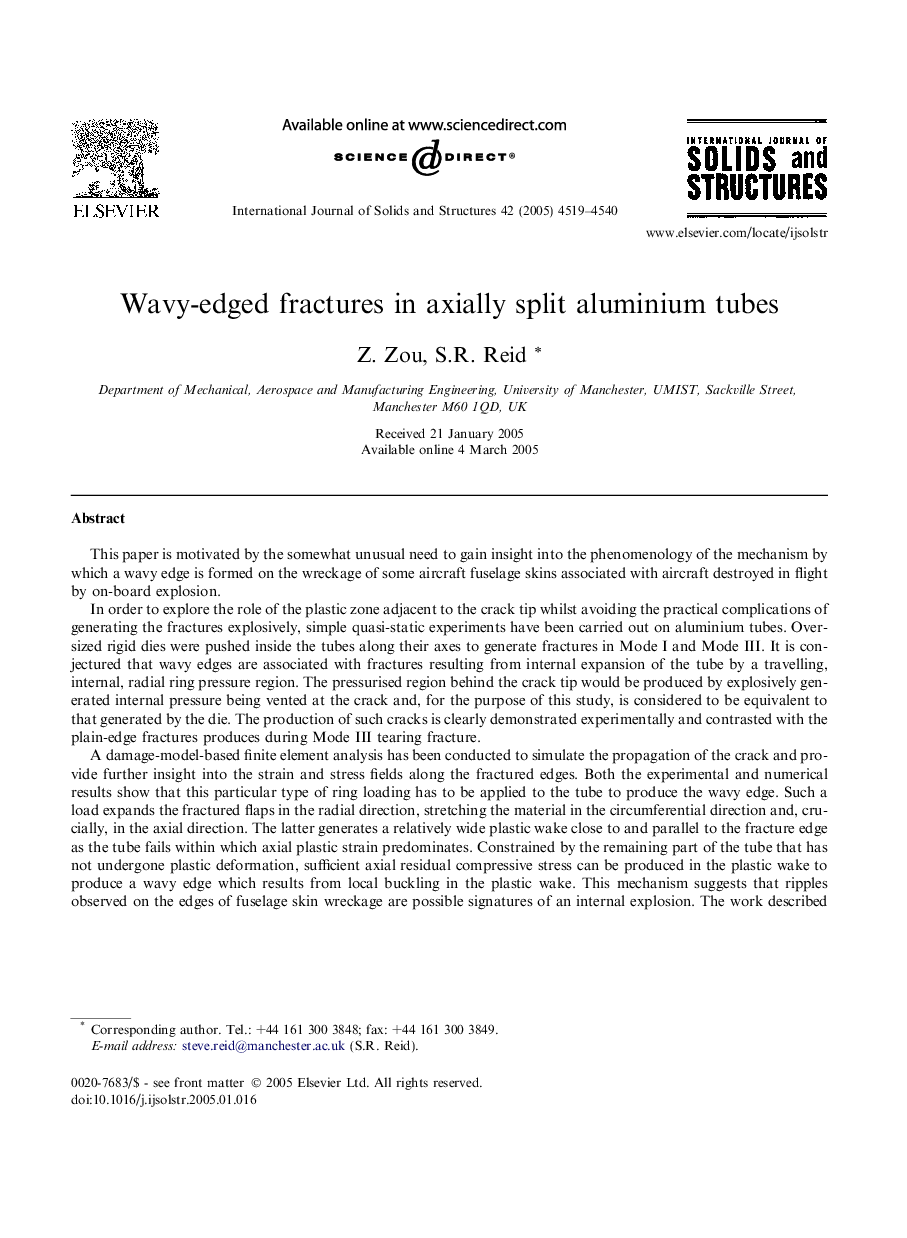| کد مقاله | کد نشریه | سال انتشار | مقاله انگلیسی | نسخه تمام متن |
|---|---|---|---|---|
| 281106 | 1430407 | 2005 | 22 صفحه PDF | دانلود رایگان |

This paper is motivated by the somewhat unusual need to gain insight into the phenomenology of the mechanism by which a wavy edge is formed on the wreckage of some aircraft fuselage skins associated with aircraft destroyed in flight by on-board explosion.In order to explore the role of the plastic zone adjacent to the crack tip whilst avoiding the practical complications of generating the fractures explosively, simple quasi-static experiments have been carried out on aluminium tubes. Oversized rigid dies were pushed inside the tubes along their axes to generate fractures in Mode I and Mode III. It is conjectured that wavy edges are associated with fractures resulting from internal expansion of the tube by a travelling, internal, radial ring pressure region. The pressurised region behind the crack tip would be produced by explosively generated internal pressure being vented at the crack and, for the purpose of this study, is considered to be equivalent to that generated by the die. The production of such cracks is clearly demonstrated experimentally and contrasted with the plain-edge fractures produces during Mode III tearing fracture.A damage-model-based finite element analysis has been conducted to simulate the propagation of the crack and provide further insight into the strain and stress fields along the fractured edges. Both the experimental and numerical results show that this particular type of ring loading has to be applied to the tube to produce the wavy edge. Such a load expands the fractured flaps in the radial direction, stretching the material in the circumferential direction and, crucially, in the axial direction. The latter generates a relatively wide plastic wake close to and parallel to the fracture edge as the tube fails within which axial plastic strain predominates. Constrained by the remaining part of the tube that has not undergone plastic deformation, sufficient axial residual compressive stress can be produced in the plastic wake to produce a wavy edge which results from local buckling in the plastic wake. This mechanism suggests that ripples observed on the edges of fuselage skin wreckage are possible signatures of an internal explosion. The work described herein is also relevant to the deformation in a failed high-pressure gas pipe following the propagation of a ductile crack as noted previously in the literature.
Journal: International Journal of Solids and Structures - Volume 42, Issues 16–17, August 2005, Pages 4519–4540